The exodus started in spring 1975.
Following the fall of Saigon to the communist North Vietnamese, 130,000 refugees were evacuated from South Vietnam.
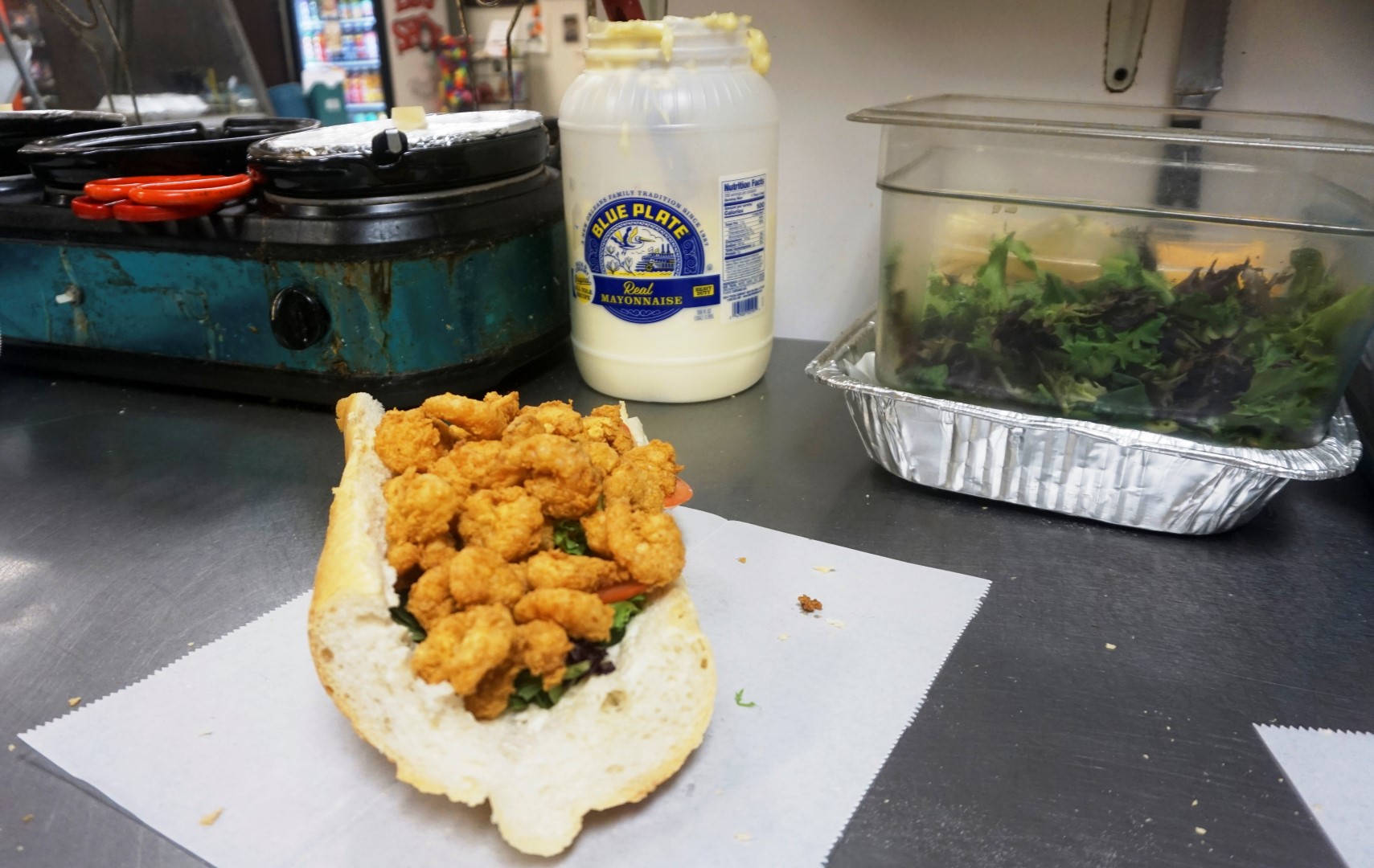
The fried shrimp po boy at Singleton’s Mini Mart stands among the finest in southeast Louisiana.
The Gulf Coast South was a favored destination.
Bau Nguyen, 14 years old and studying to become a Catholic priest, fled Vietnam April 22nd, 1975. Just eight days later Saigon would fall to the communists and within 24 hours become Ho Chi Minh City.
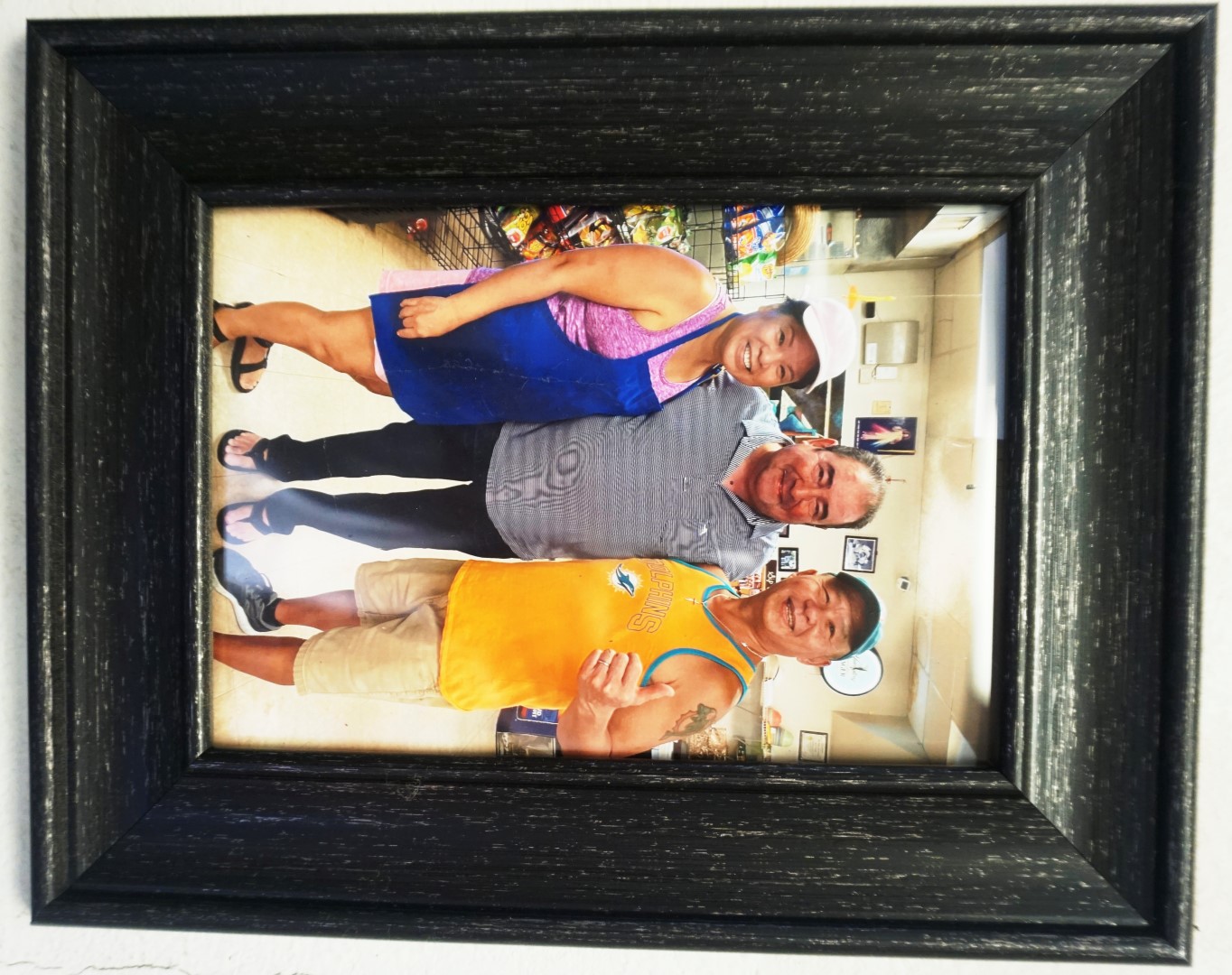
Emeril Lagasse is a staunch and long-time supporter of Singleton’s Mini Mart.
Florida is where he grew from teenager to young man.
It’s Thanksgiving 1981, and Bau Ngyuen is on vacation and looking for a party. New Orleans East’s lush swamps and bayous bear no small resemblance to the Mekong Delta and the warm sultry climate would’ve been welcoming.
Walking along through Village de’ Lest in 83° weather, Bau spied a house all lit up and filled to the rafters with revelers.
Nguyen did not know it but the girl who would become the love of his life’s family owned the house and Laura, his future bride was inside.
They have now been married 40 years.
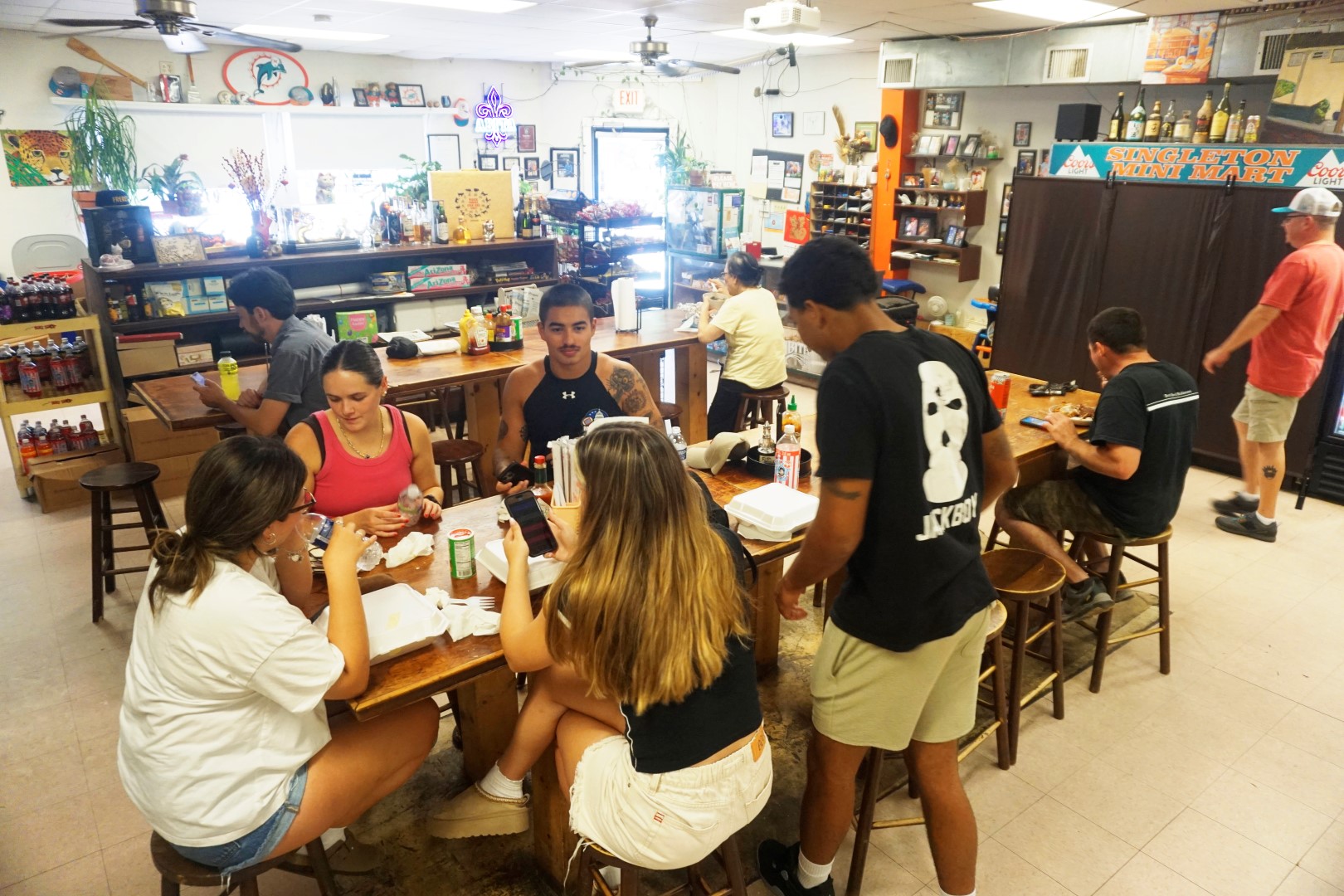
Late lunch crowd at Singleton’s Mini Mart in New Orleans Black Pearl neighborhood.
Those who were not interested in the life of a mariner slowly saved their money and opened lunch counters, curb stores, and gas stations. By the late 70s, the Versailles neighborhood of eastern New Orleans, which housed the most densely-populated group of Vietnamese outside of Vietnam, had turned into a thriving commercial district where you could get food as good as any served in Ho Chi Minh City.
In 1993 Bau Nguyen returned to New Orleans from California where he had sought his fortune in the furniture industry. He and his wife opened a grocery store in the Gentilly neighborhood in spite of having little knowledge of the trade.
They quickly discovered that the grocery game is a hard one of long hours and low income.
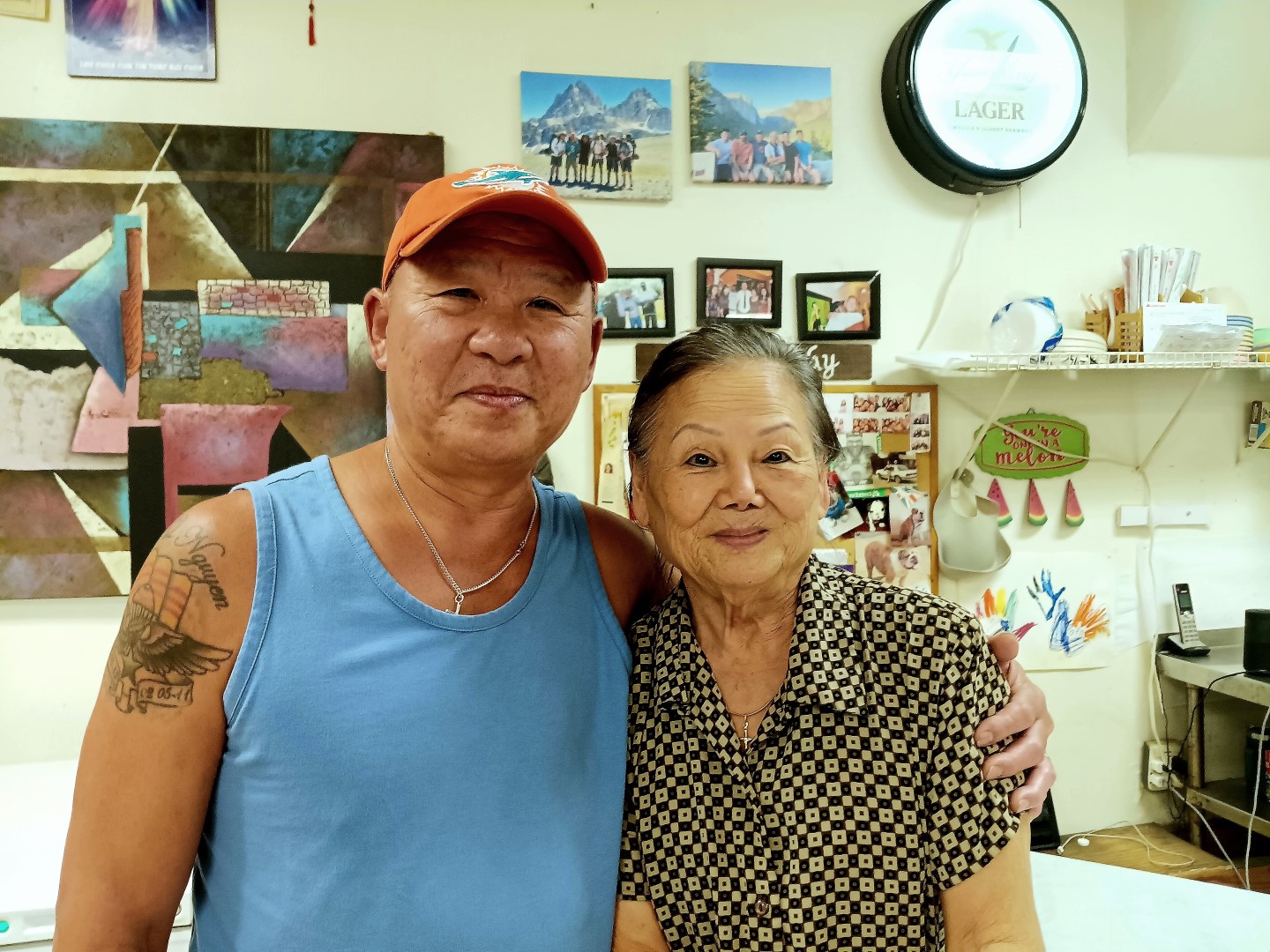
Bau Nguyen and his mother at Singleton’s Mini Mart.
How successful is Bau and Laura’s po boy shop? They put five kids through college selling po boys, hotplates and pho.
On a recent visit, Bau described how he and Laura, through trial and error, developed all the signature recipes for their cafe – starting with their Philly steak and continuing with what is regarded as the apotheosis of regional po boys: their Korean barbecue pork.
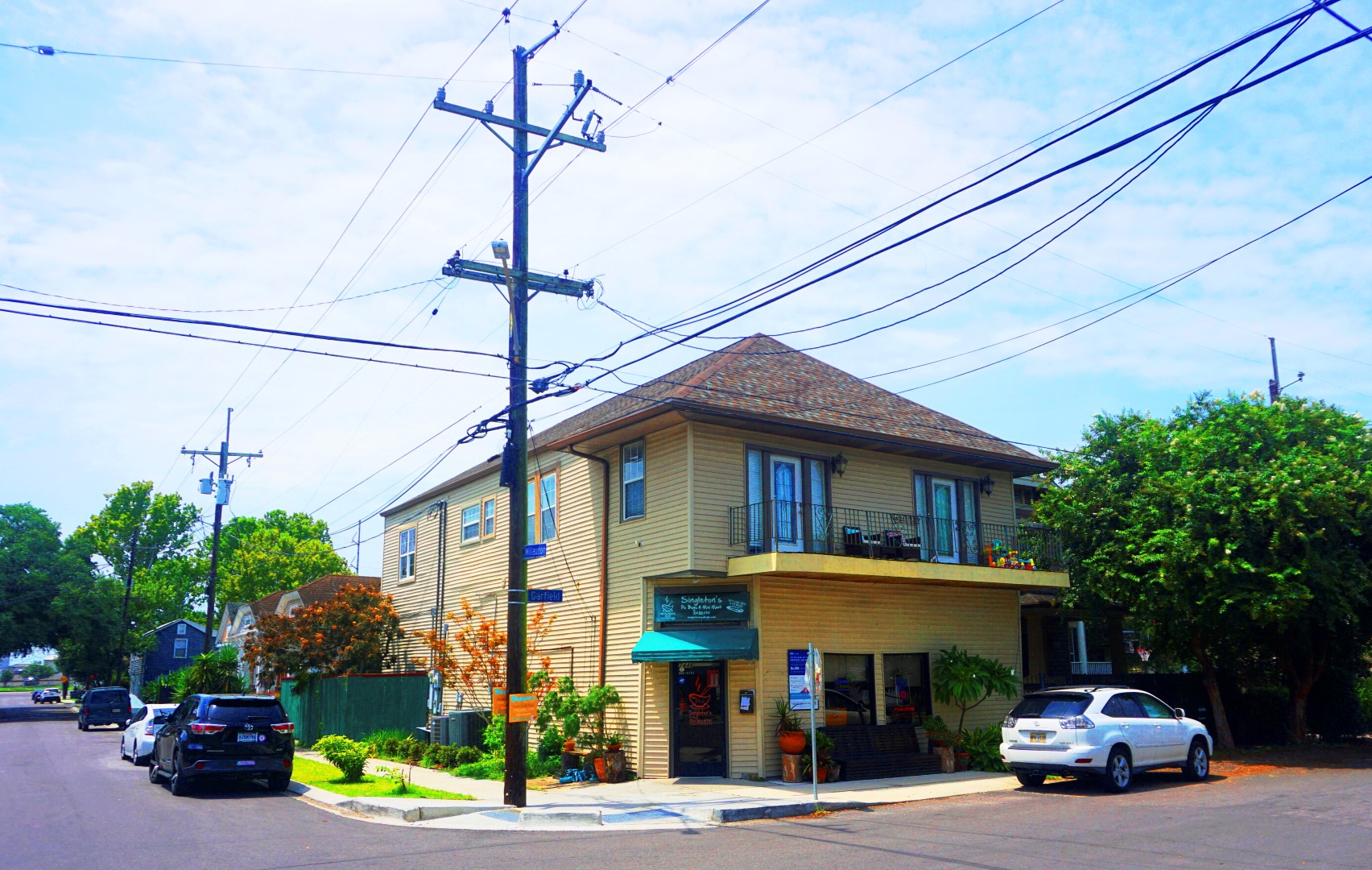
Singleton’s Mini Mart. 7446 Garfield St. New Orleans, Louisiana, 70118
Intense deliciousness abounds at Singleton’s but their Korean barbecue has been known to make grown men weep.
New Orleans provides an embarrasment of riches when it’s dinner time. Spaniards, Creoles, Vietnamese, African-Americans, and a host of other people have formed a fabric of food culture that is unmatched in the US.
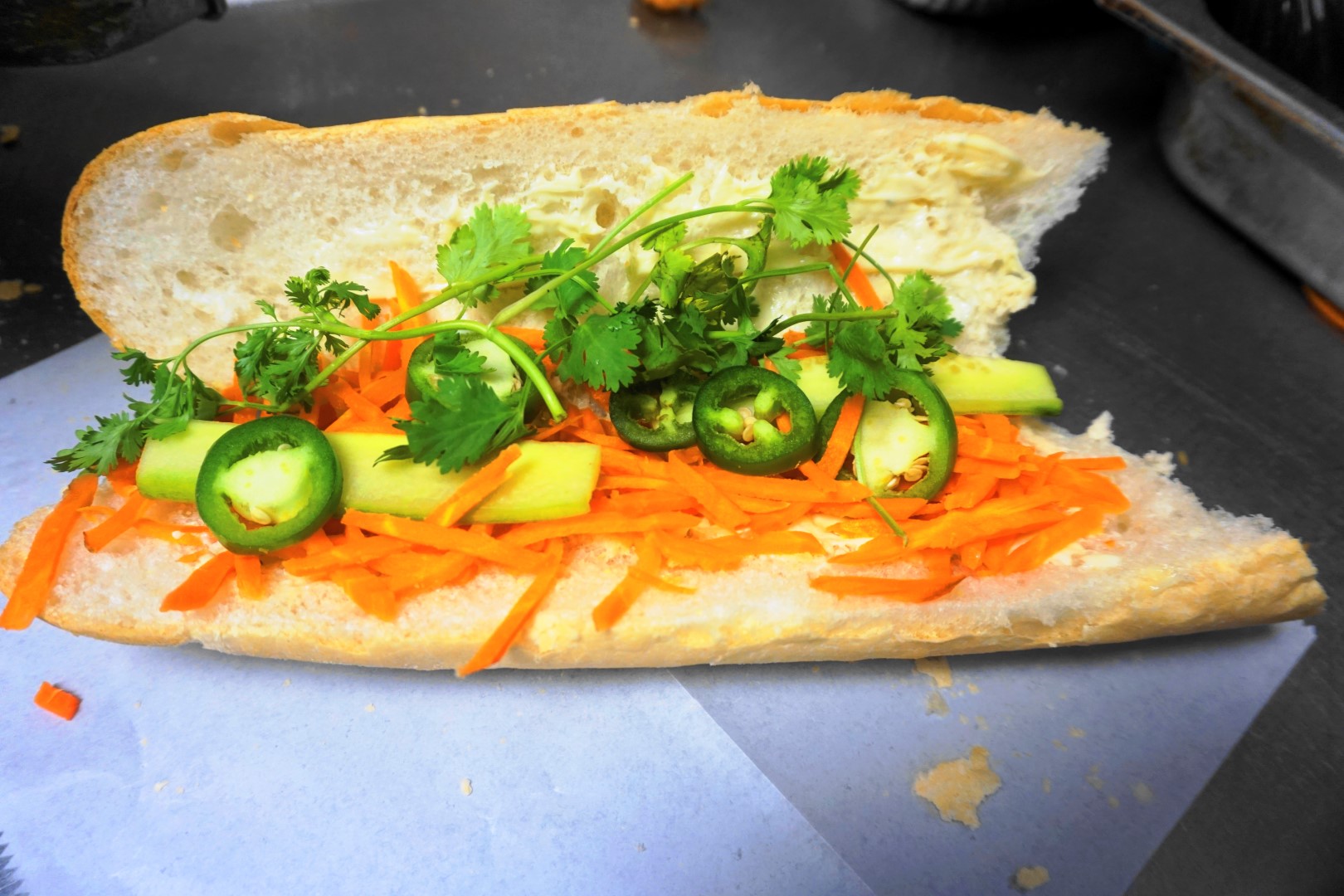
The beginnings of a classic bánh mì sandwich at Singleton’s Mini Mart.
The classic Franco-Vietnamese sandwich, the banh mi is in heavy abundance across our 17 wards. In Vietnam proper the word banh mi just means bread but here in the US it gets fancified a bit and is commonly used to describe one of the most luxurious foodstuffs on the planet combining mayonnaise, pork belly, pâté, cured meats, cow’s butter, and a bounty of herbs and vegetables such as cucumber, cilantro, daikon and carrots marinated in white vinegar and sugar, spring onions, and chile peppers.
There are hundreds of iterations of this dish but many local eaters simply call this sandwich a Vietnamese po boy.
After decades of 14 hour workdays the Nguyens can now begin to reap the rewards of their hard labor.

1948 advertisement for Didier’s Food Store, a former grocer in the Singleton’s Mini Mart space.
There will be plenty eating, drinking and carousing with long-lost friends and relatives – laughter will be shared and perhaps a tear or two will be shed. And New Orleans will be waiting with open arms when they return to reopen their beloved cafe. Estimated by some to be the finest corner store in the entire city.
Pluck and determination go a long way in determining fortune.
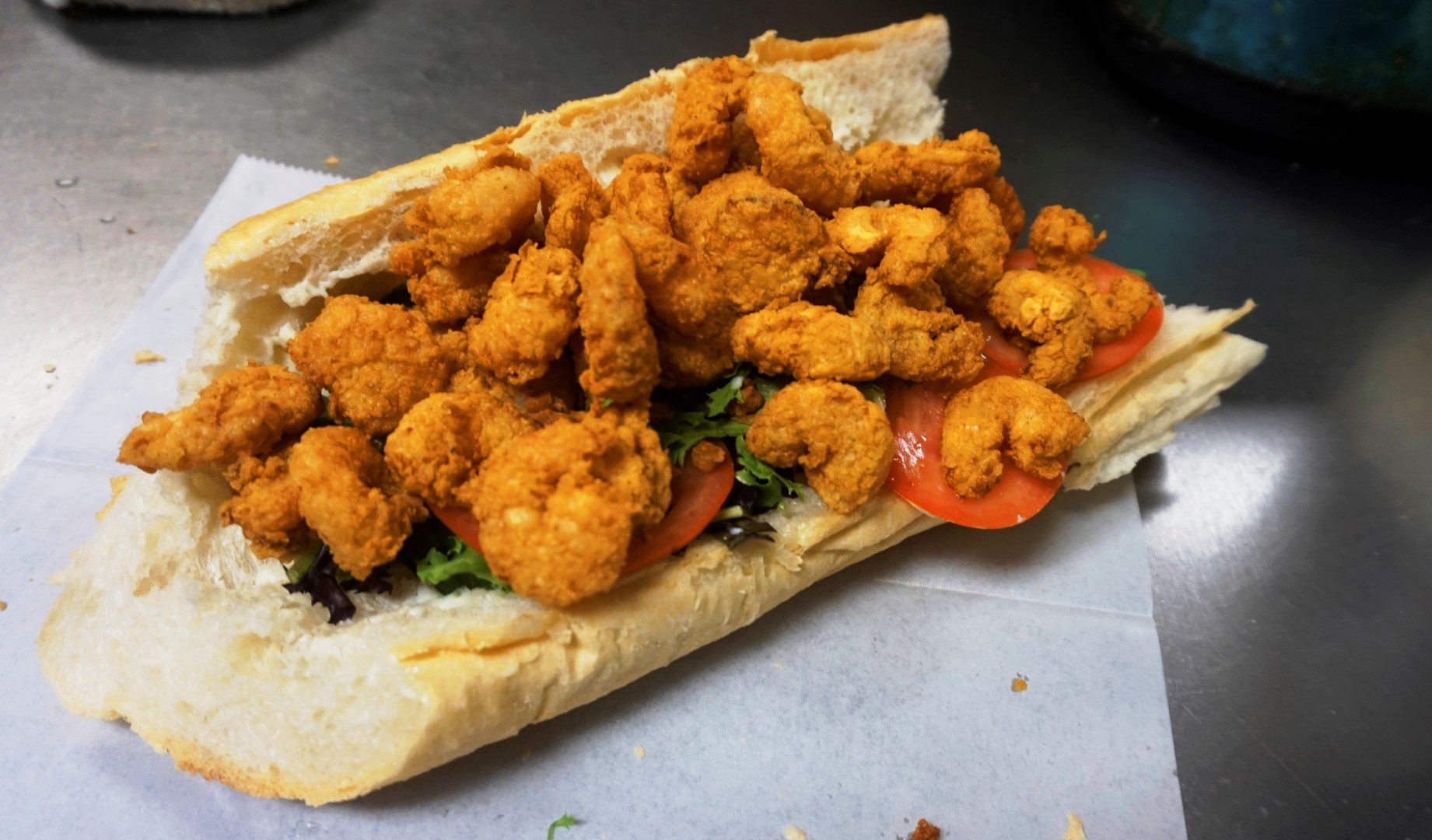
The classic fried shrimp po boy at Singleton’s Mini Mart. Traditionally dressed as is proper. The proper framework for this sandwich always includes a heavy drift of mayonnaise, in this instance Blue Plate.
Singleton’s Mini Mart
7446 Garfield St.
New Orleans, Louisiana
70118
telephone
504-866-4741
